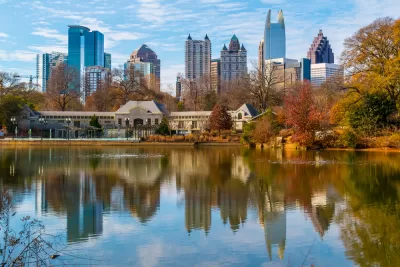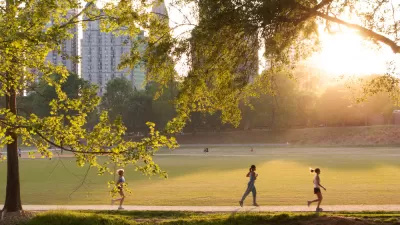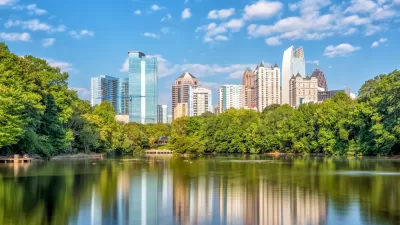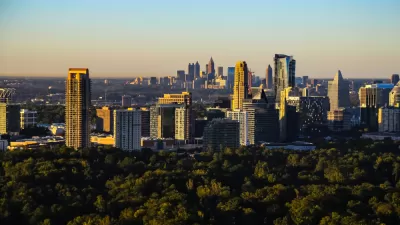Two of the most prominent planners in Atlanta have released a book to help set an agenda for equity as the city grows in the next two decades.

Atlanta Planning Commissioner Tim Keane and urban designer Ryan Gravel (famous for thinking up the idea for the Atlanta BeltLine) released the Atlanta City Design book earlier in September, culminating a two-year project intended to echo through the decades.
Jared Brey reports in detail on the story for Next City, explaining that Atlanta City Design "is meant to inform and shape all of Atlanta’s various plans, codes and ordinances. The document is not a plan itself, but 'a strategic realignment of existing plans' that seeks to lock some core city-building principles into everything Atlanta does."
Brey explains how the book embraces the city's growth, trusting that design can accommodate the city's newcomers while working toward equity as inspired by the "idea of the 'Beloved Community,' discussed by Martin Luther King Jr. in a 1957 sermon called the Birth of a New Nation." Brey writes in more detail:
The five values highlighted in the book — nature, access, ambition, progress and equity — reflect many of the efforts that cities across the world are struggling with today. How do we embrace and protect the natural aspects of the urban environment? How do people move around a landscape marked by gridlocked highways? How does a city welcome newcomers while looking out for the interests of marginalized communities? How do we fight poverty and build racial equity?
The question is, then, whether the book will influence the city's leaders as they navigate a complex election cycle and deal with the fallout of challenges with gentrification and displacement as a result of large-scale revitalization projects.

FULL STORY: New Atlanta Planning Book Takes Cue From Martin Luther King Jr.

Trump Administration Could Effectively End Housing Voucher Program
Federal officials are eyeing major cuts to the Section 8 program that helps millions of low-income households pay rent.

Planetizen Federal Action Tracker
A weekly monitor of how Trump’s orders and actions are impacting planners and planning in America.

Ken Jennings Launches Transit Web Series
The Jeopardy champ wants you to ride public transit.

Washington Legislature Passes Rent Increase Cap
A bill that caps rent increases at 7 percent plus inflation is headed to the governor’s desk.

From Planning to Action: How LA County Is Rethinking Climate Resilience
Chief Sustainability Officer Rita Kampalath outlines the County’s shift from planning to implementation in its climate resilience efforts, emphasizing cross-departmental coordination, updated recovery strategies, and the need for flexible funding.

New Mexico Aging Department Commits to Helping Seniors Age ‘In Place’ and ‘Autonomously’ in New Draft Plan
As New Mexico’s population of seniors continues to grow, the state’s aging department is proposing expanded initiatives to help seniors maintain their autonomy while also supporting family caregivers.
Urban Design for Planners 1: Software Tools
This six-course series explores essential urban design concepts using open source software and equips planners with the tools they need to participate fully in the urban design process.
Planning for Universal Design
Learn the tools for implementing Universal Design in planning regulations.
Heyer Gruel & Associates PA
Ada County Highway District
Institute for Housing and Urban Development Studies (IHS)
City of Grandview
Harvard GSD Executive Education
Toledo-Lucas County Plan Commissions
Salt Lake City
NYU Wagner Graduate School of Public Service





























